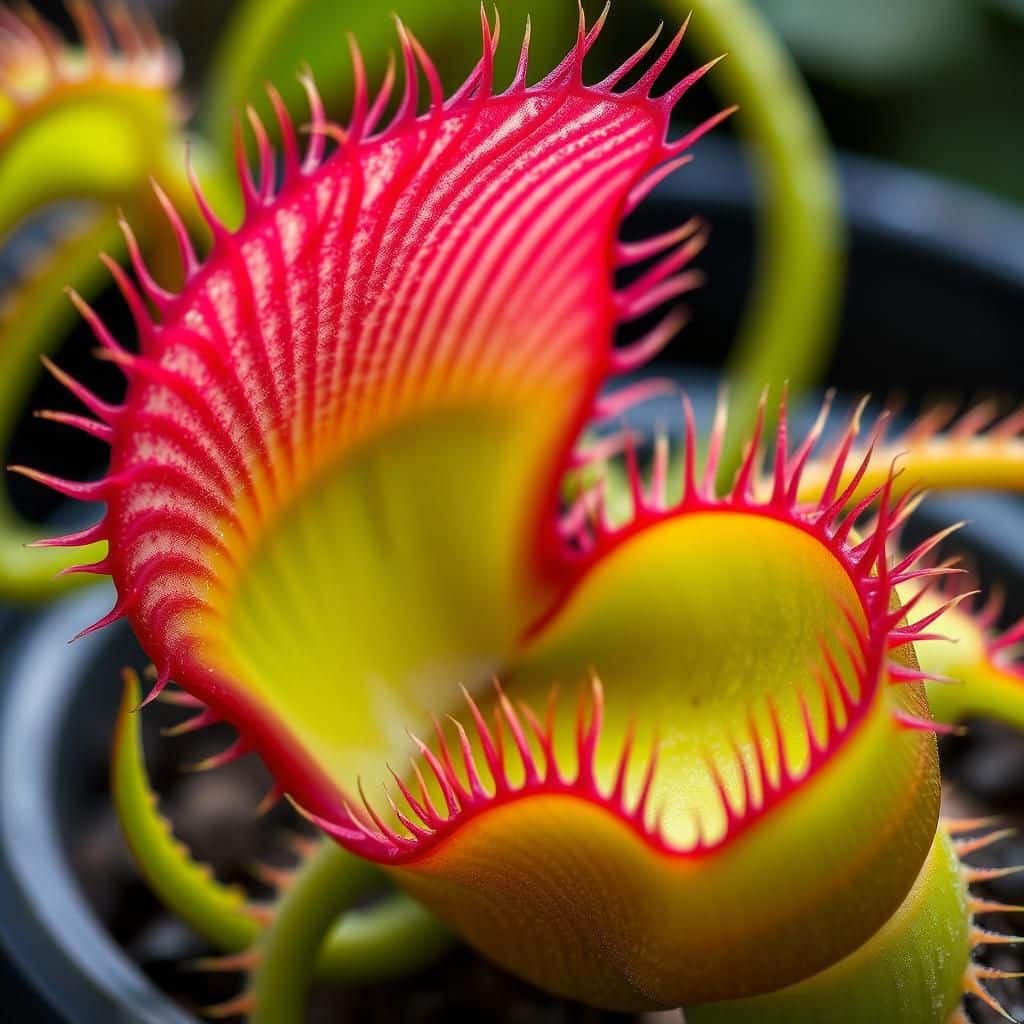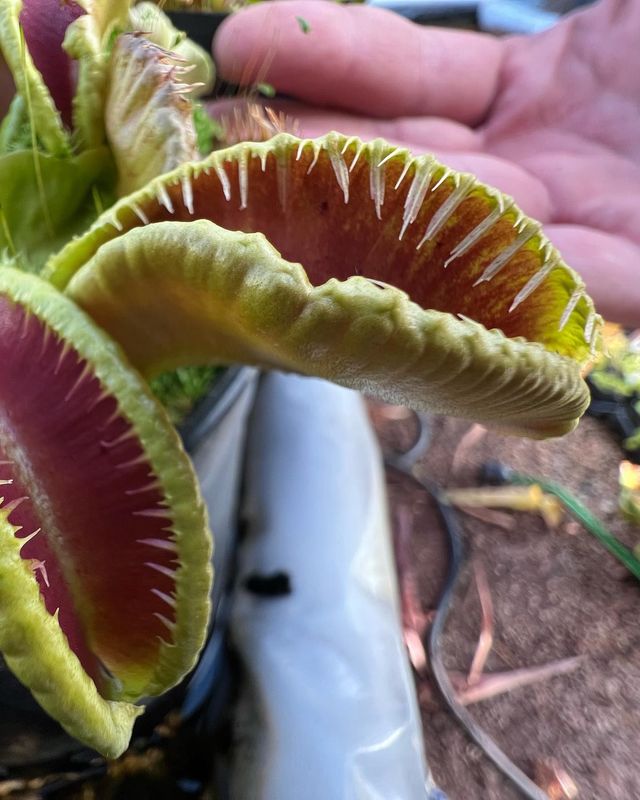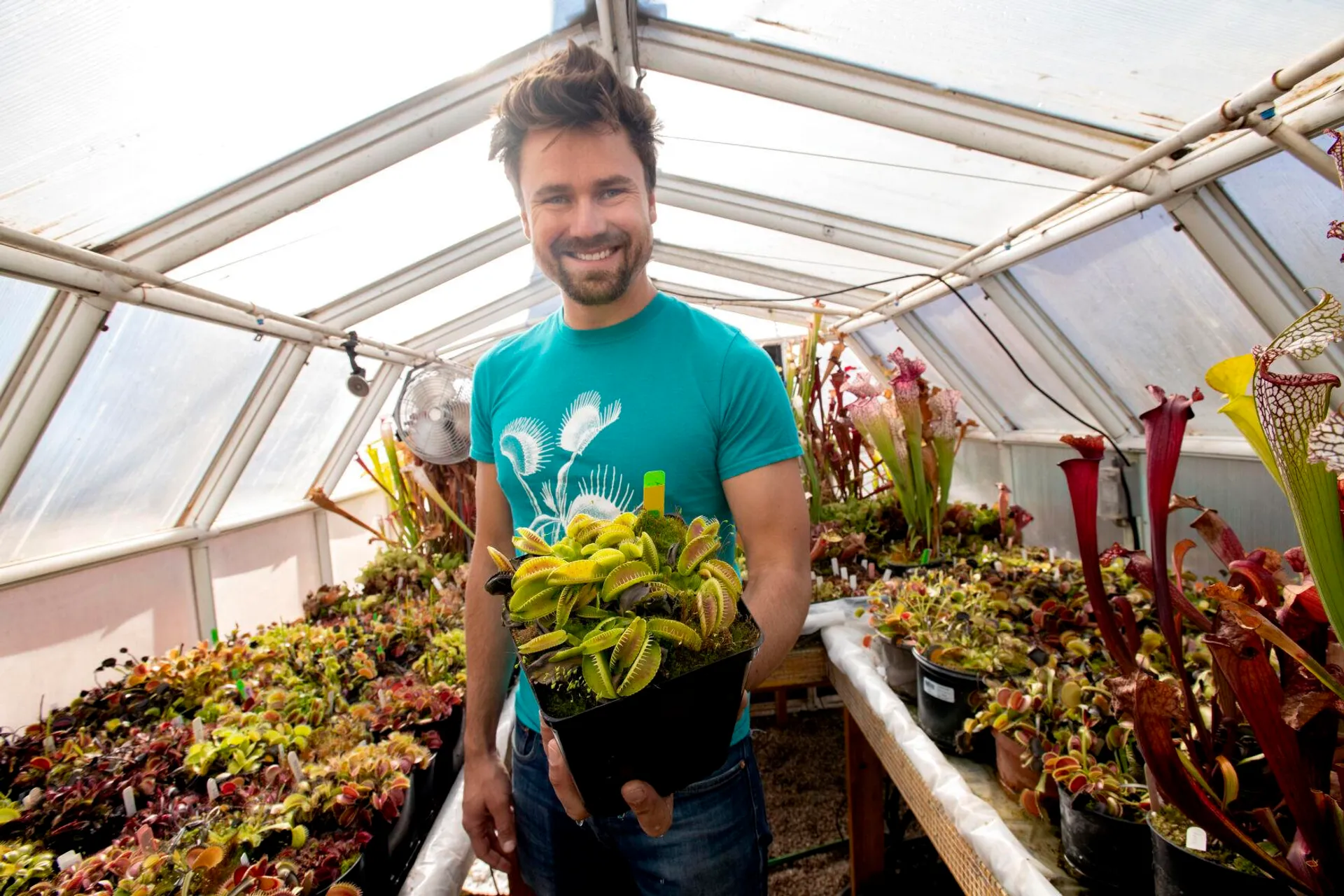How Big Can Venus Flytraps Get? A Comprehensive Guide to Their Size and Growth

Venus flytraps are fascinating carnivorous plants that captivate enthusiasts with their unique feeding mechanism and striking appearance. As one of the most iconic plant species, understanding their size and growth potential is essential for both novice and experienced growers alike. This comprehensive guide delves into the factors influencing the size of Venus flytraps, including environmental conditions, species variations, and care practices. Whether you’re curious about how large these plants can grow in cultivation or in the wild, this article will provide valuable insights to enhance your appreciation and care for this remarkable botanical wonder.
How Big Can Venus Flytraps Get?
The Venus flytrap (Dionaea muscipula) is a fascinating carnivorous plant known for its unique trapping mechanism, but one of the intriguing aspects is its size. Typically, Venus flytraps can grow to about 4 to 5 inches (10 to 13 cm) in diameter when fully matured, although some exceptional specimens can reach sizes up to 6 inches (15 cm) across. The traps themselves are usually around 1 to 3 inches (2.5 to 7.5 cm) long, making them one of the largest carnivorous plants. The growth is influenced by various factors, including environment, nutrition, and genetics, which can lead to variations in size among individual plants.
Factors Influencing Size
There are several factors that play a critical role in determining how large a Venus flytrap can grow. The quality of the soil, the amount of sunlight, and the water quality significantly impact the health and growth of the plant. Venus flytraps thrive in nutrient-poor, acidic soils, and when these conditions are met, they can grow larger. Additionally, they require plenty of direct sunlight for optimal photosynthesis, influencing both growth rate and size. Proper watering practices, using distilled or rainwater rather than tap water, also contribute to the overall vigor of the plant.
Common Size Variations
In general, Venus flytraps exhibit a range of sizes depending on their variety and growing conditions. The most commonly cultivated varieties tend to grow up to 4 inches (10 cm), while select cultivars can reach sizes of 5 to 6 inches (12 to 15 cm). Some breeders specialize in developing larger strains, known as giant flytraps, which are selectively bred for size, showcasing traps that can be remarkably large and visually striking. Choosing plants from reputable sources can ensure size quality as well.
Environmental Needs for Growth
To achieve maximum size, Venus flytraps need specific environmental conditions to thrive. They prefer warm, humid environments with temperatures ranging from 70°F to 95°F (21°C to 35°C) during the growing season. Furthermore, they require a period of dormancy during the winter months when temperatures drop, which is essential for the plant's health and future growth. During this dormancy, it is critical to adjust watering and sunlight exposure to ensure the plant can store energy for the following growing season, directly impacting its potential size.
Care Tips for Size Maximization
Optimal care practices can significantly influence the potential size of a Venus flytrap. To maximize growth, ensure that it receives full sunlight for at least 12 hours a day, as this supports robust development. Fertilizing with specialized carnivorous plant food during the growing season can help, but it is important to avoid over-fertilization, which can harm the plant. Observing proper watering techniques, including using low-mineral water and maintaining the right moisture level without letting the plant sit in waterlogged conditions, can contribute to healthier and larger plants.
Comparison of Sizes in Different Cultivars
Here is a table summarizing the size comparisons of commonly grown Venus flytrap cultivars:
| Cultivar | Average Trap Size | Total Diameter |
|---|---|---|
| Typical | 1 to 2 inches (2.5 to 5 cm) | 4 to 5 inches (10 to 13 cm) |
| Giant | 2 to 3 inches (5 to 7.5 cm) | 5 to 6 inches (12 to 15 cm) |
| Red Dragon | 1 to 3 inches (2.5 to 7.5 cm) | 4 to 5 inches (10 to 13 cm) |
| Big Mouth | 1.5 to 2.5 inches (4 to 6.5 cm) | 5 to 6 inches (12 to 15 cm) |
| Fuzzy Tooth | 1 to 2 inches (2.5 to 5 cm) | 4 to 5 inches (10 to 13 cm) |
What is the largest Venus flytrap ever?

What is the largest Venus flytrap ever recorded?
The largest Venus flytrap (Dionaea muscipula) was reported to reach an impressive size of around 7 inches (17.8 cm) in diameter, including its trap openings. This rare specimen highlights the potential for significant growth in optimal conditions. Factors such as availability of nutrients, sunlight, and appropriate humidity can contribute to the size of these carnivorous plants. Their traps are not only fascinating to observe but also essential for their survival, allowing them to catch insects that provide crucial nutrients.
- The largest recorded trap size is about 3 inches (7.6 cm) wide when closed.
- Under ideal conditions, Venus flytraps can thrive and grow larger than the average size of around 1.5 inches (3.8 cm).
- Special cultivars and environmental conditions can lead to abnormal growth rates.
Factors influencing the size of Venus flytraps
Several key factors influence the ultimate size of Venus flytraps. Understanding these factors can help enthusiasts successfully cultivate larger specimens. The size of the plants can be affected by their environment, care, and genetics.
See also:
- Soil Quality: Nutrient-rich and well-draining soil can promote better growth.
- Light Exposure: Adequate sunlight, ideally 12 hours a day, encourages larger trap development.
- Water Source: Distilled or rainwater is best, as tap water can harm these plants.
Notable cultivars of Venus flytraps
Certain cultivars of Venus flytraps are specifically bred for their large size and unique characteristics. These cultivars often exhibit enhanced traits that make them popular among collectors and enthusiasts.
- B52: Known for large traps that can exceed 3 inches in diameter.
- Big Mouth: Features broader traps and is known for aggressive growth.
- Jaws: Displays an impressive jaw-like appearance, contributing to its size.
Measurements of Venus flytrap traps
The measurement of trap sizes among Venus flytraps can vary significantly among individual plants. While typical traps measure around 1 to 1.5 inches, exceptional specimens can result in substantially larger openings.
- The average trap size is about 1.5 inches (3.8 cm) when fully open.
- Record-holder traps have been documented to reach sizes of over 3 inches (7.6 cm).
- Trap size often correlates with the age of the plant—older plants tend to grow larger traps.
Care tips for growing large Venus flytraps
To cultivate larger Venus flytraps, proper care is essential. Following specific growth tips can lead to healthier plants with larger and more robust traps.
- Use appropriate soil: A mixture of sphagnum moss and perlite is ideal for drainage.
- Provide bright light: Ideally, grow under full-spectrum grow lights if natural sunlight is insufficient.
- Maintain humidity: Growing in a terrarium or using humidity trays can boost growth rates.
How big can a house Venus flytrap get?

The Venus flytrap (Dionaea muscipula) is a fascinating carnivorous plant known for its unique mechanism of capturing prey. When considering how big a house Venus flytrap can get, there are several factors to take into account.
Size of Mature Venus Flytraps
Mature Venus flytraps can reach sizes of approximately 6 to 12 inches in diameter. However, the size can vary based on several factors including the environment and care they receive. The plant’s rosette-like shape contributes to this spread, as the leaves grow outwards and create a full appearance.
- The average size of a mature Venus flytrap is about 5 to 7 inches tall from the base.
- Some larger cultivars can exceed 12 inches in diameter with optimal care.
- Indoor conditions primarily dictate growth; adequate light and humidity can enhance plant health and size.
Factors Influencing Growth Size
There are several key factors that influence the growth size of a house Venus flytrap. These include light, humidity, water, and soil quality. Each of these factors plays a critical role in determining how robust and sizeable the plant can become.
- Light: Venus flytraps require full sun for at least 12 hours a day to grow to their full potential.
- Humidity: Higher humidity levels (around 50-70%) can encourage larger leaf growth.
- Water Quality: Using distilled or rainwater is essential; tap water contains minerals that can inhibit growth.
Common Cultivars and Their Sizes
There are several popular cultivars of the Venus flytrap that showcase different sizes and physical characteristics. Each cultivar may vary significantly in size, giving enthusiasts various options.
- The 'B52' cultivar can grow to approximately 6-8 inches in diameter.
- 'Wacky Traps' features irregularly shaped traps and can also reach sizes of about 6 inches across.
- The 'Big Mouth' cultivar often exhibits larger traps that can extend up to 1.5 inches in size.
Potential Growth in Container Gardens
When grown in containers, the size of the Venus flytrap can be affected by the pot size and soil volume. Proper container gardening techniques can enhance growth potential.
- A larger pot can allow for a more extensive root system, promoting larger growth.
- Soil quality impacts nutrient absorption; using a mix designed for carnivorous plants can yield better results.
- Regular repotting every 1-2 years ensures that the plant remains healthy and can grow to its maximum size.
Expectations for House Growth
When grown indoors as a house plant, the Venus flytrap typically experiences a slower growth rate compared to outdoor conditions. However, with the right care, satisfactory growth can still be achieved.
See also:
- Indoor conditions might limit the overall size to around 4-6 inches in diameter due to light limitations.
- With sufficient care, including high-intensity artificial lighting during the winter months, plants can thrive.
- Healthy plants will produce multiple traps, creating a fuller appearance despite potential size restrictions.
Why are Venus Flytraps illegal?

Venus Flytraps, scientifically known as Dionaea muscipula, are fascinating carnivorous plants that have captured the interest of many due to their unique mechanism for trapping and digesting prey. However, it is important to note that in certain jurisdictions, the collection and trade of Venus Flytraps can be illegal. The underlying reasons for these legal restrictions can be attributed to various factors concerning their conservation status, habitat, and ecological importance.
Conservation Status
The conservation status of Venus Flytraps is a primary reason for their legal restrictions. They are native to a limited region in the United States, particularly in the coastal plains of North and South Carolina. As their natural habitat continues to decline due to urbanization and agriculture, their populations have also dwindled. Some key points include:
- Endangered Species: The Venus Flytrap is considered a species of concern due to its restricted geographical range.
- Protection Laws: Various laws have been enacted to protect endangered species, limiting the collection or sale of these plants.
- Conservation Efforts: Legal measures aim to support conservation efforts and promote the recovery of their populations in the wild.
Habitat Loss
Habitat loss is a significant threat to the survival of Venus Flytraps. Their natural environments are increasingly being destroyed, which affects their ability to thrive in the wild. Considerations include:
- Urban Development: Expansion of cities and infrastructure leads to the destruction of wetlands and bogs where these plants grow.
- Agricultural Practices: Farming activities can introduce herbicides and fertilizers that further degrade their natural habitats.
- Environmental Changes: Climate change can alter the ecosystems supporting Venus Flytraps, further increasing their vulnerability.
Ecological Importance
Venus Flytraps play a unique role in their ecosystem, contributing to biodiversity and the health of their habitats. Understanding their ecological importance helps elucidate why protecting them is imperative. Important points include:
- Insect Regulation: By preying on insects, they help manage pest populations which can affect the broader food web.
- Biodiversity Indicators: The health of Venus Flytrap populations can serve as an indicator of the overall health of wetland ecosystems.
- Habitat Support: Their existence supports various organisms, including pollinators and other plant species dependent on similar habitats.
Illegal Collection and Trade
The illegal collection and trade of Venus Flytraps exacerbate their conservation issues, making it crucial for laws to be enforced. This aspect highlights various dimensions of the problem:
- Market Demand: The beauty and rarity of Venus Flytraps create a high demand among collectors, leading to increased poaching.
- Unsustainable Practices: Many collected plants do not survive the transition to cultivation, leading to population declines in their natural settings.
- Legal Penalties: Collecting these plants without proper permits can result in significant fines and legal repercussions for individuals and businesses.
Educational Aspect
Education plays a crucial role in mitigating the threats faced by Venus Flytraps and promoting conservation efforts. It serves several purposes that can aid in protecting this species:
- Awareness Programs: Raising awareness about their ecological importance can lead to community support for conservation actions.
- Teaching Sustainability: Education can inspire individuals to engage in sustainable practices that protect natural habitats.
- Research Opportunities: Encouraging research on Venus Flytraps can yield information beneficial for their conservation and, ultimately, their survival.
Questions from Our Readers
How big can Venus flytraps get?
The typical size of a Venus flytrap ranges from 5 to 6 inches in diameter, including leaves and traps; however, with proper care, some can grow even larger, reaching up to 10 inches.
What factors influence the size of a Venus flytrap?
The size of a Venus flytrap can be influenced by several factors, including light exposure, water quality, and soil type; providing adequate nutrients and optimal conditions can result in larger traps.
Are there different varieties of Venus flytraps that vary in size?
Yes, there are various cultivars of Venus flytraps that differ in size and trap morphology; some varieties, like the B52, can produce larger traps compared to standard types.
See also:
Can growing conditions affect the growth of Venus flytraps?
Absolutely, growing conditions play a crucial role in the development of Venus flytraps; planting them in nutrient-poor soil, ensuring ample sunlight, and maintaining proper humidity levels can enhance their growth potential.

If you want to read more articles like How Big Can Venus Flytraps Get? A Comprehensive Guide to Their Size and Growth, we recommend you check out our Planter category.
Leave a Reply
Related Articles